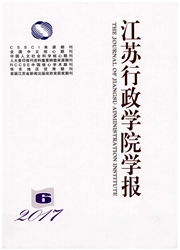

 中文摘要:
中文摘要:
从1953年起,中国逐步建立起控制导向的干部分类制度——干部分部分级管理制度,该制度突出科层体系中的“官-民”身份界分与等级关系。2006年的干部制度改革强调通过分类优化管理提高组织效率,表现出管理主义色彩,势必加重效率至上、弱化公共责任和治理绩效等问题。中国党政干部分类制度改革应当从控制导向走向治理绩效导向,其基本特征是兼顾外部控制者、部门主管和普通公务员的需求,以实现公共利益、组织利益和雇员利益的融合。它是外部控制者实施监督以提高政府回应性和服务性的问责工具,是部门管理者通过人事激励与约束提高组织绩效的管理工具,也是激发普通公务员自主管理和发展的赋能工具。
 英文摘要:
英文摘要:
Since 1953, China has gradually established the control-oriented cadre classification system -- the system to manage cadres according to departments and levels, which highlights the classification of leader-citizen status. The cadre system reform in 2006 emphasized improving efficiency through classified optimized management, which was kind of managerialism and therefore, brought about more efficiency-oriented problems, less emphasis on public responsibility and management performance. The classification system reform of Chinese party and government leaders should change from control orientation to management performance orientation, which is basically featured by meeting the demands of outside controllers, department supervisors and common civil servants so as to achieve the combination of public interests, organizational interests and employees' interests. It is an instrument for outside controllers to implement supervision to improve government response and service, an instrument for department managers to improve organizational performance by means of personnel incentives and disincentives, an instrument to encourage common civil servants to achieve self-management and development.
 同期刊论文项目
同期刊论文项目
 同项目期刊论文
同项目期刊论文
 期刊信息
期刊信息
